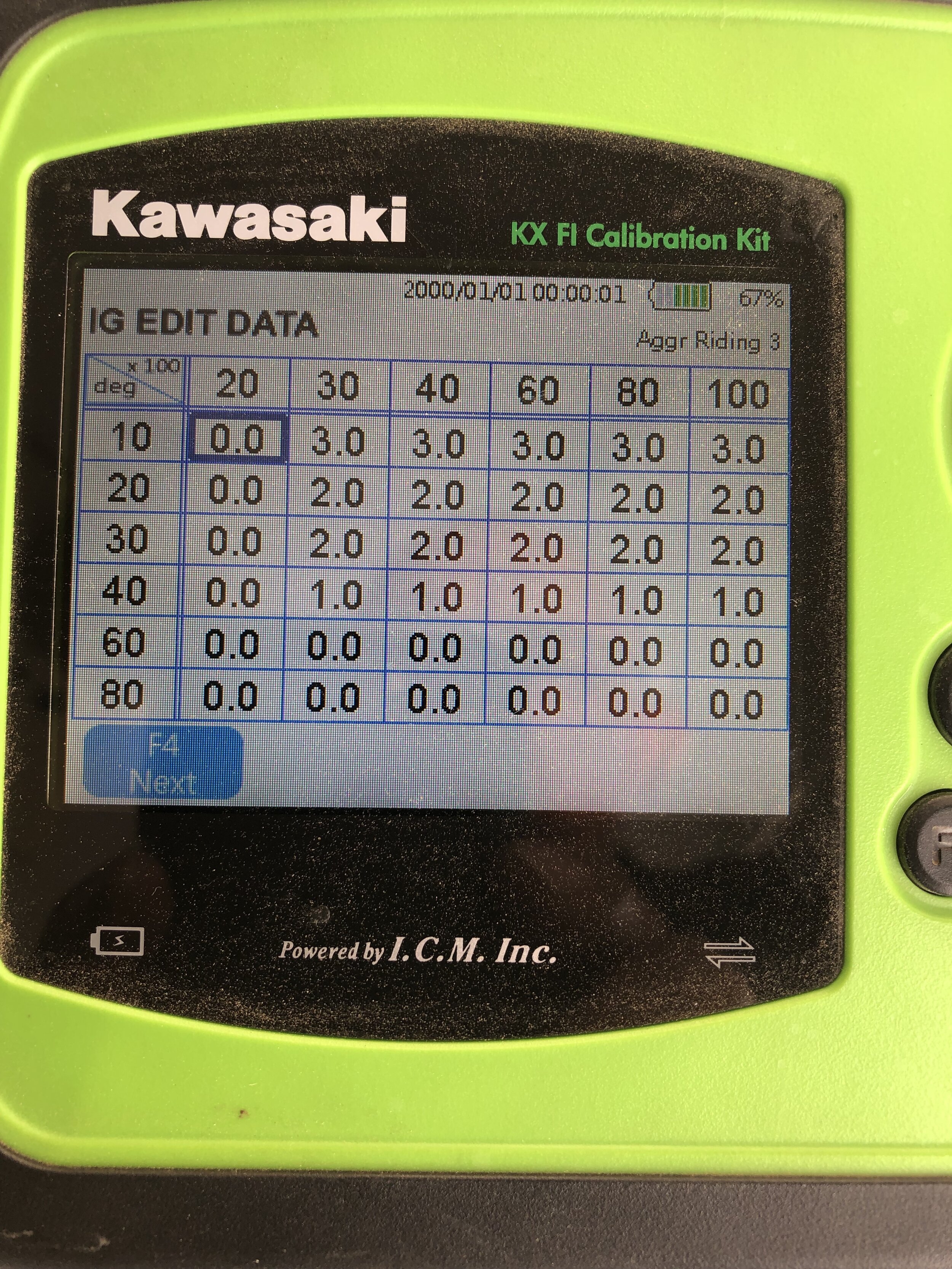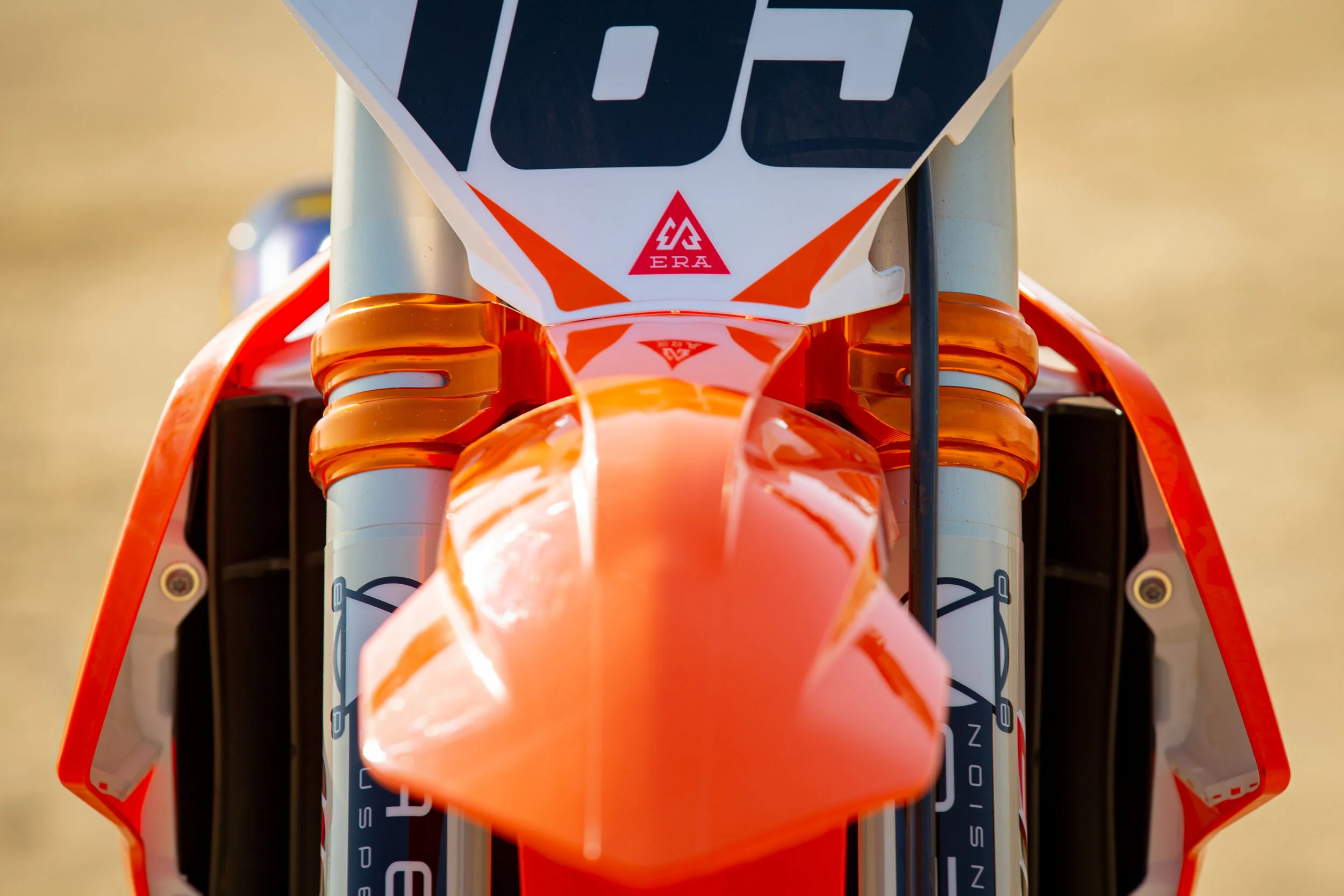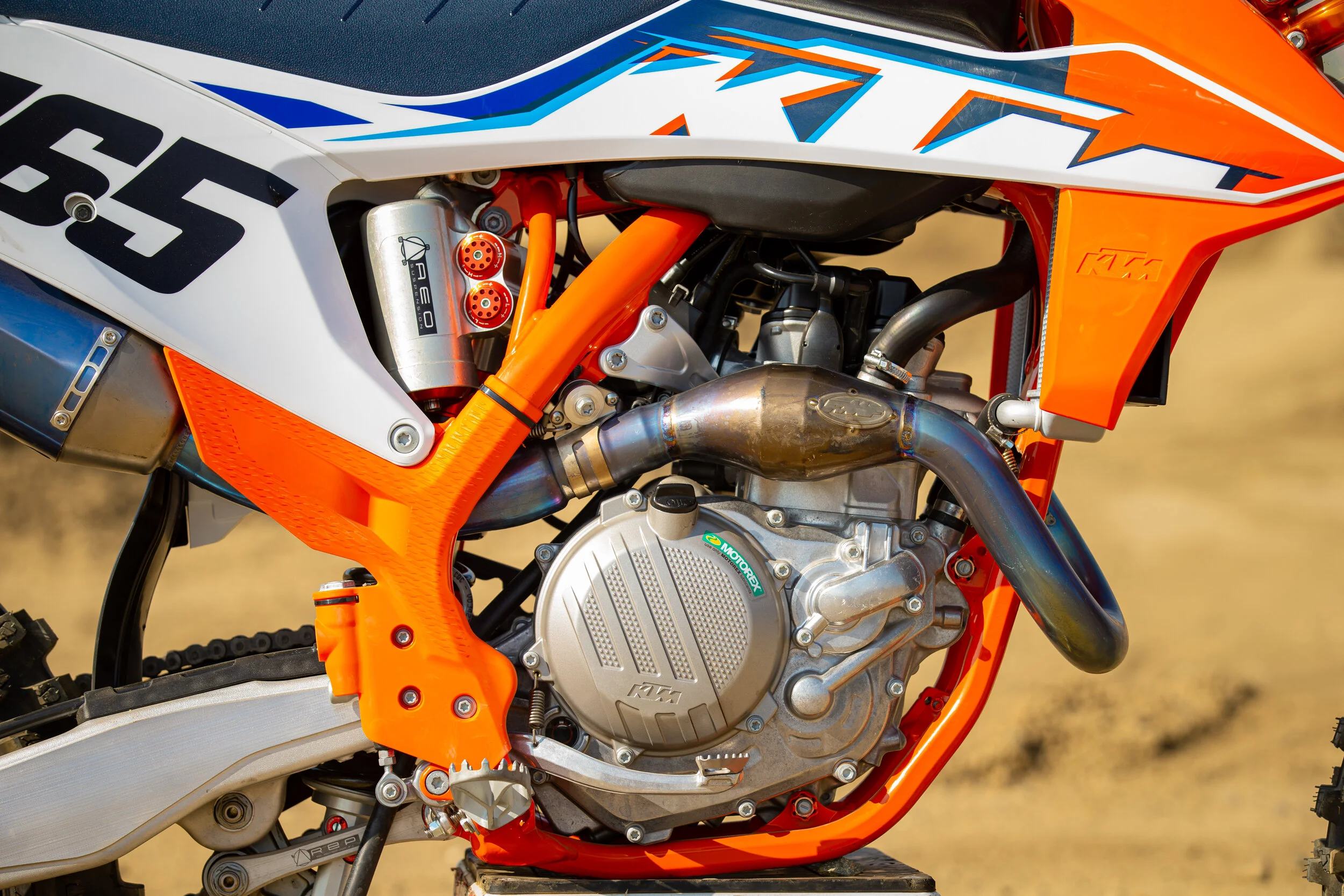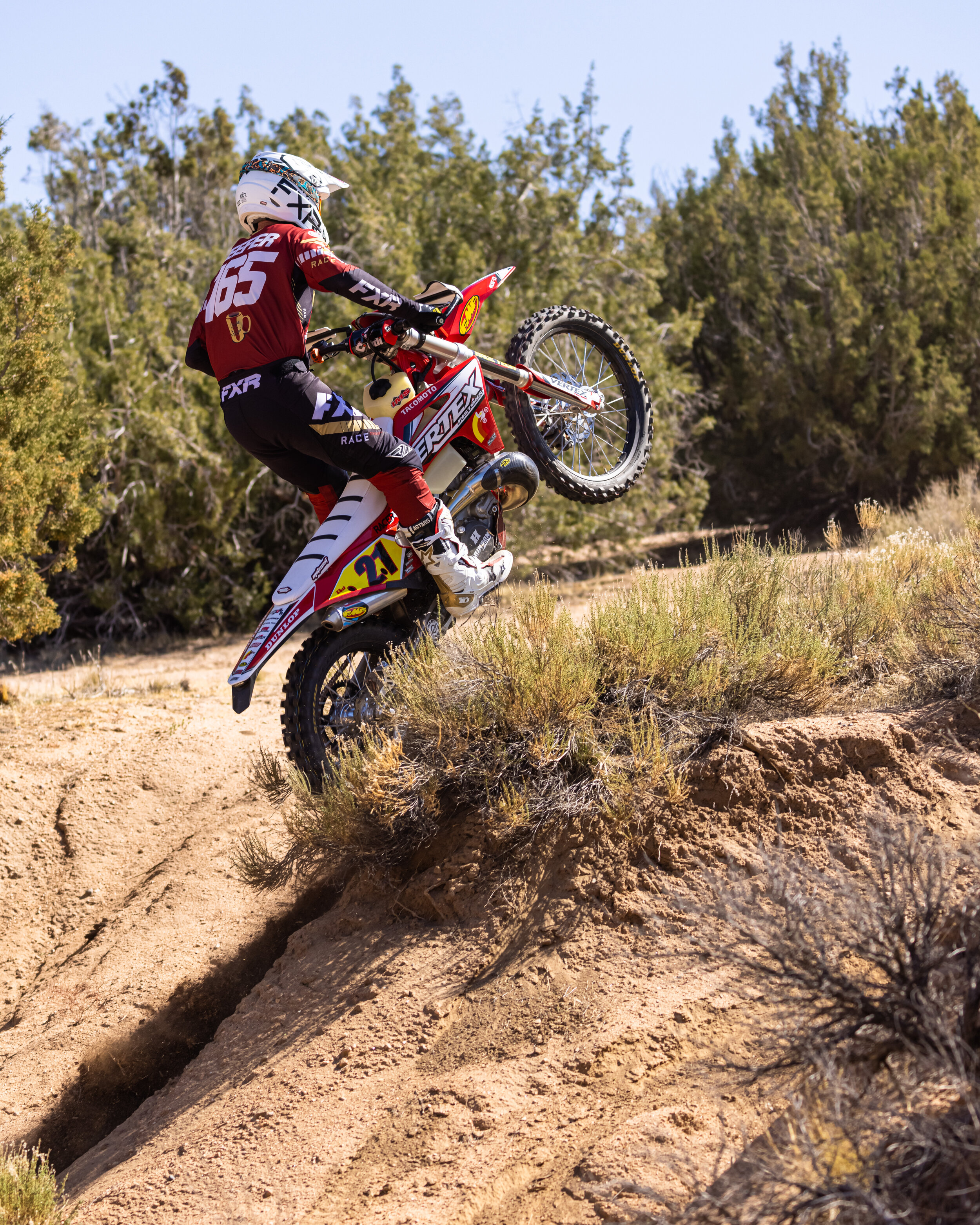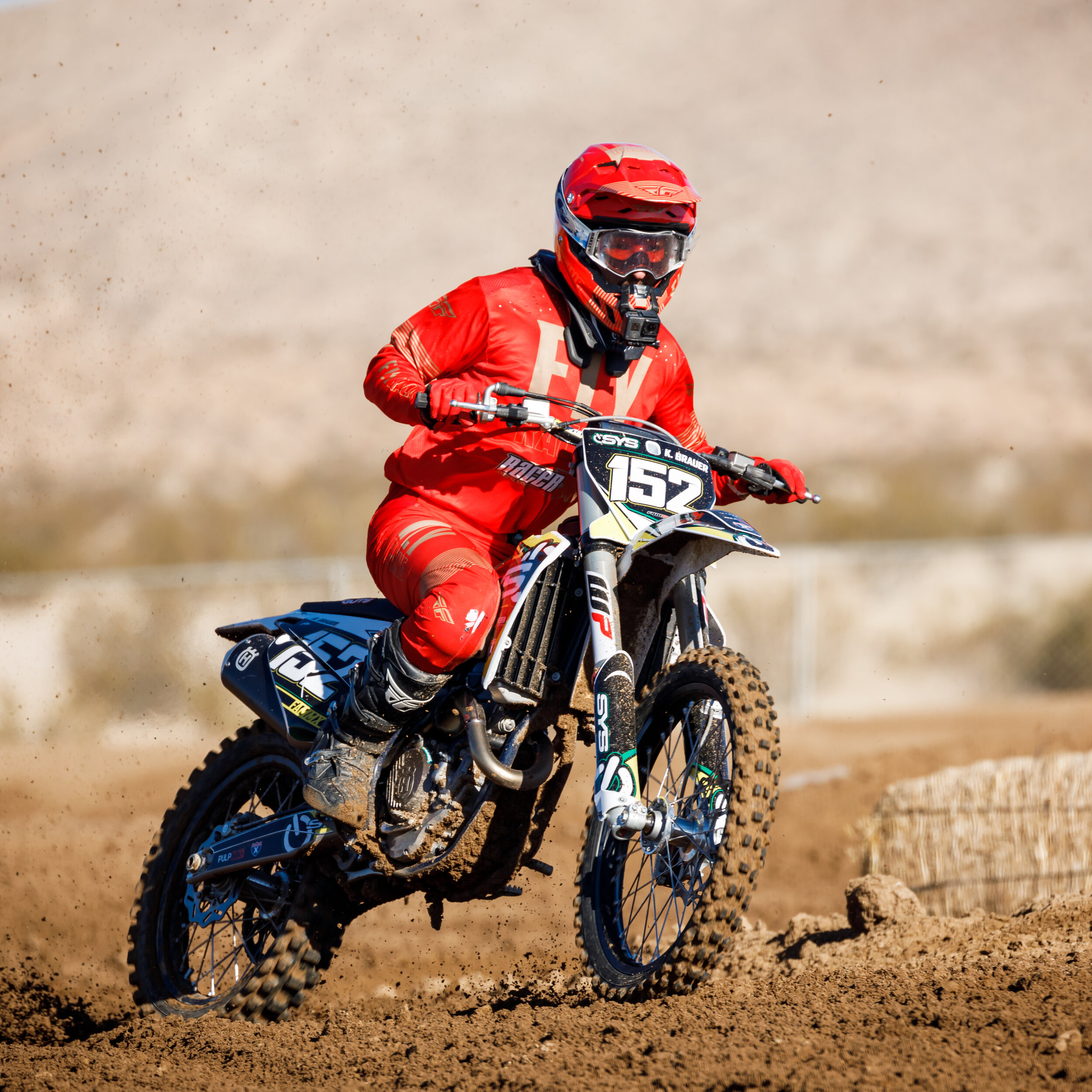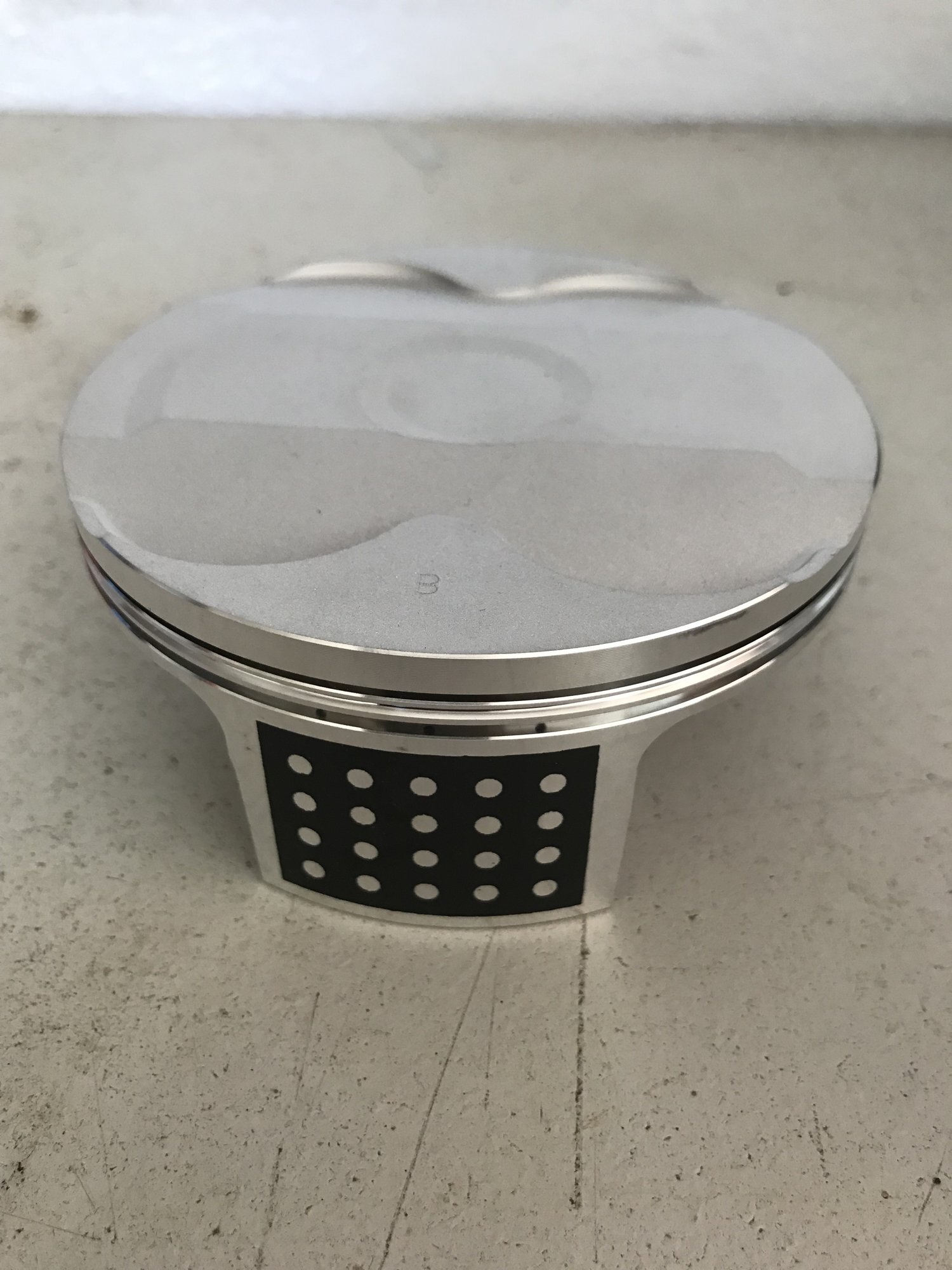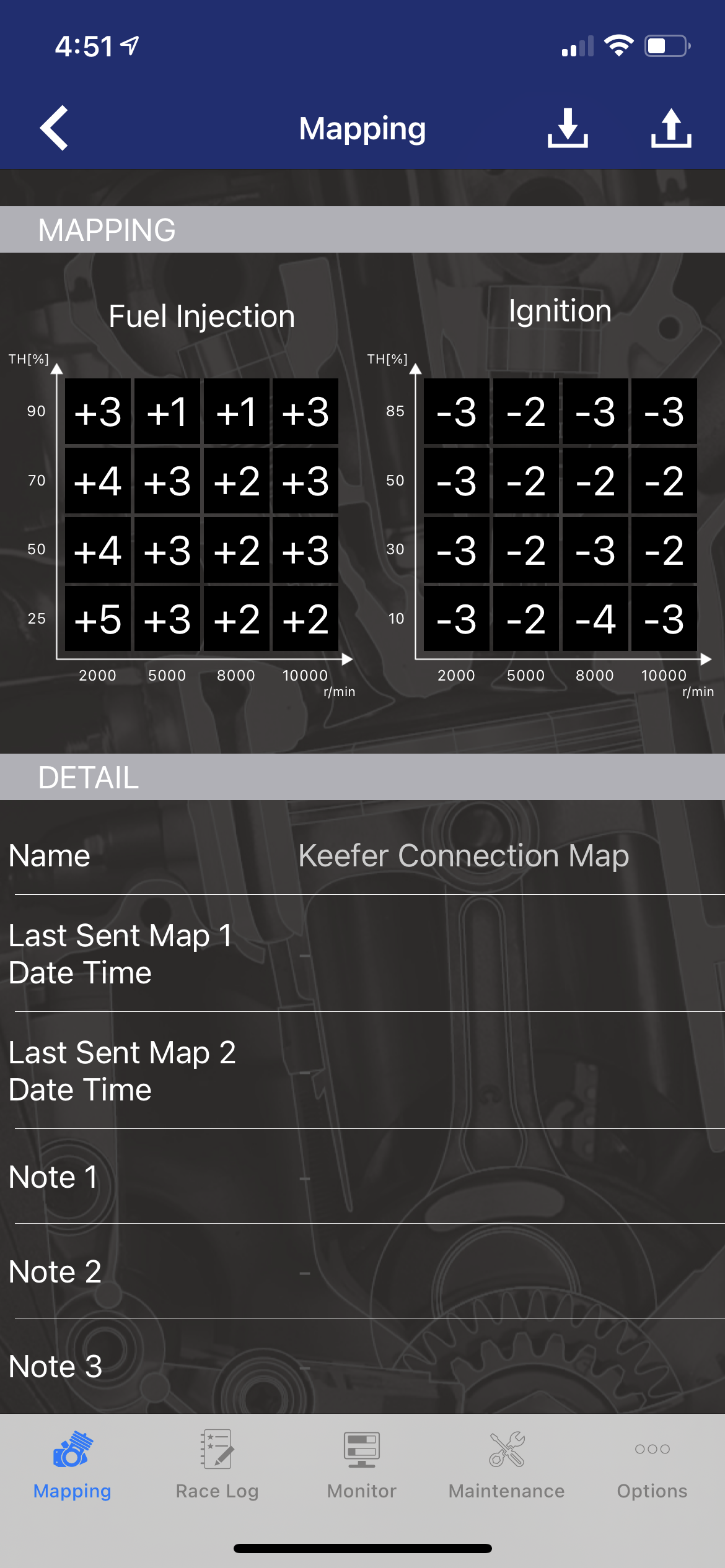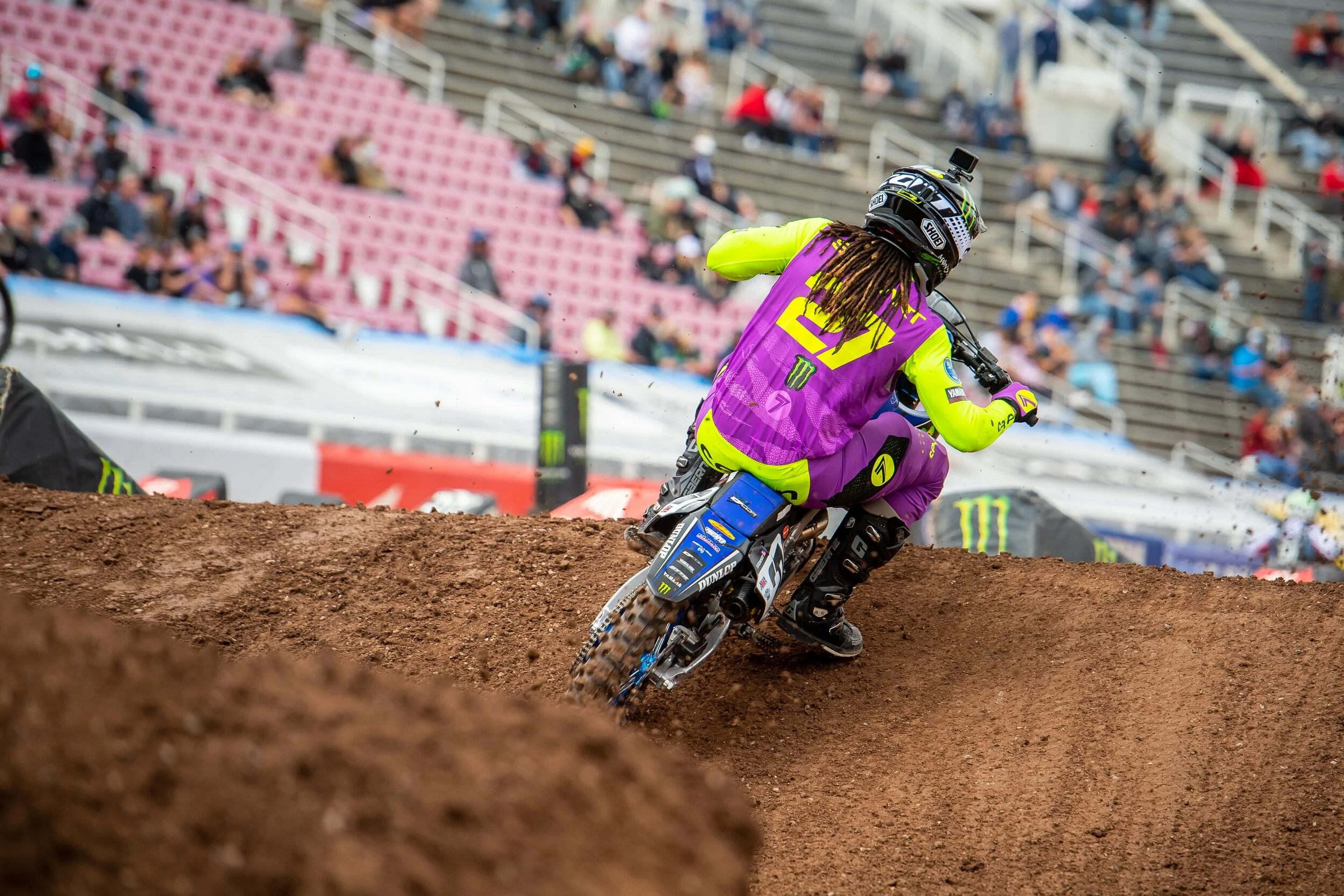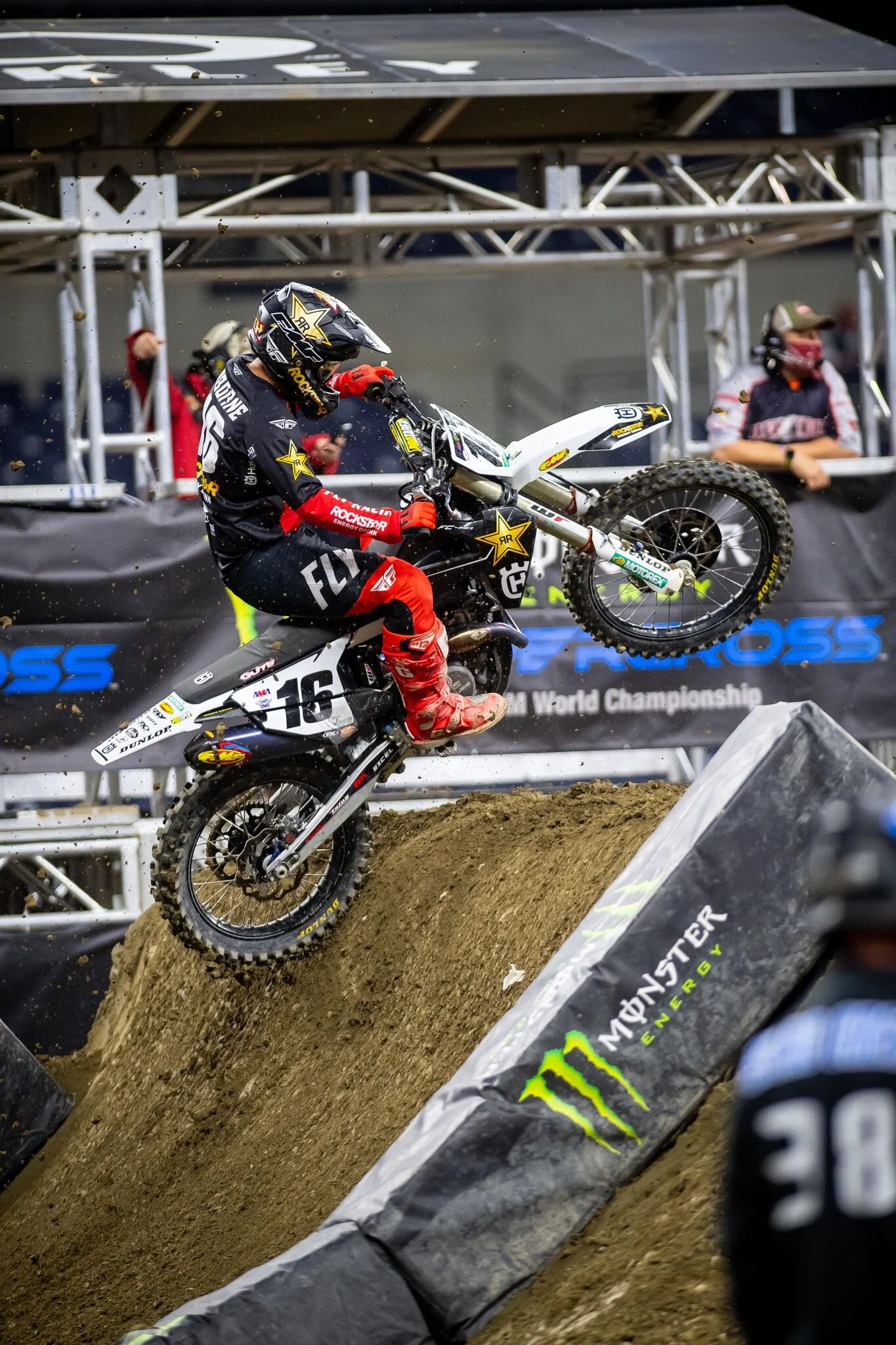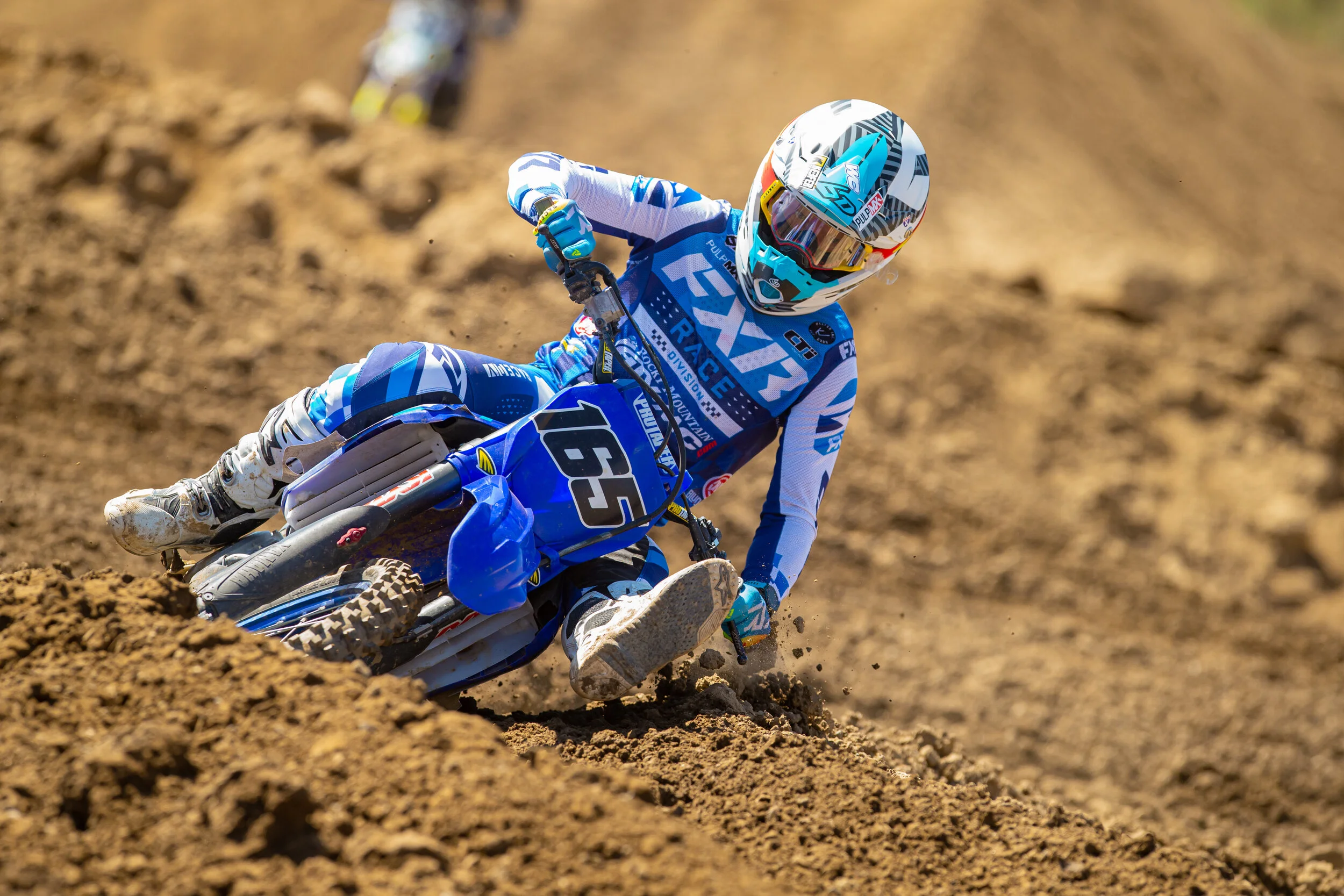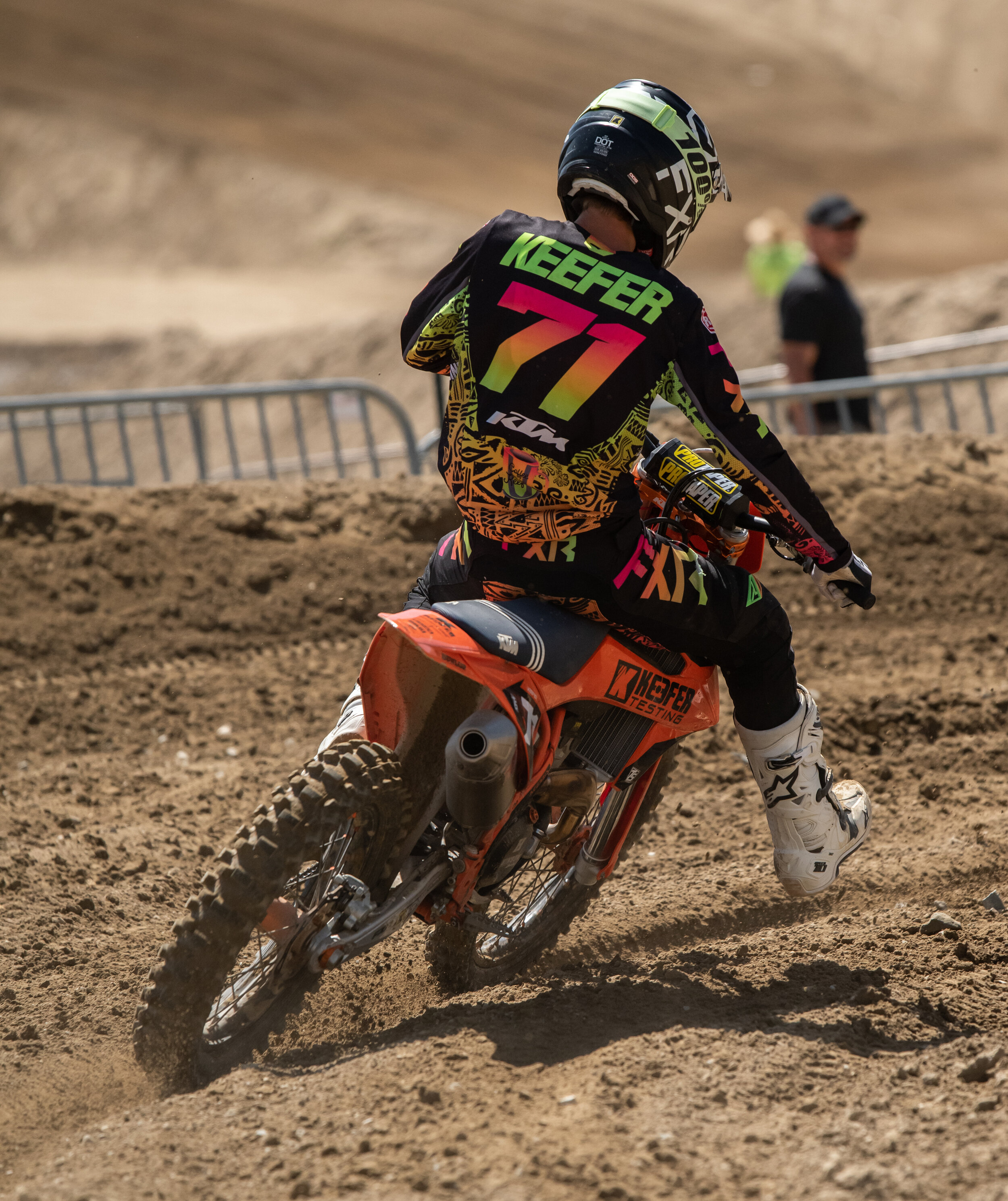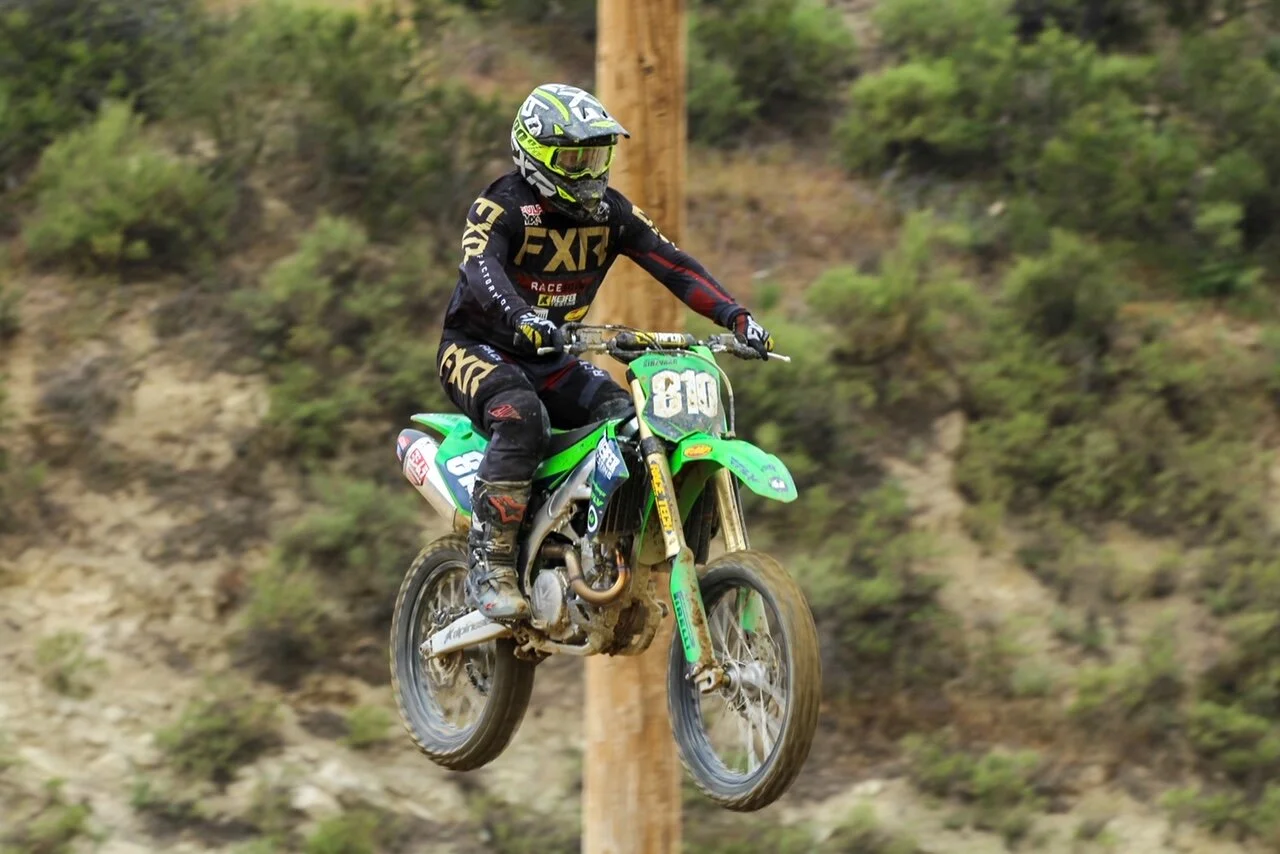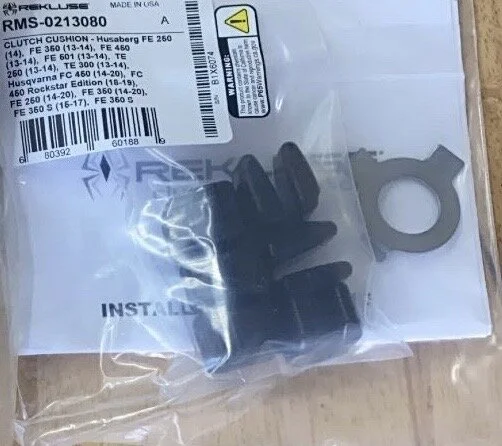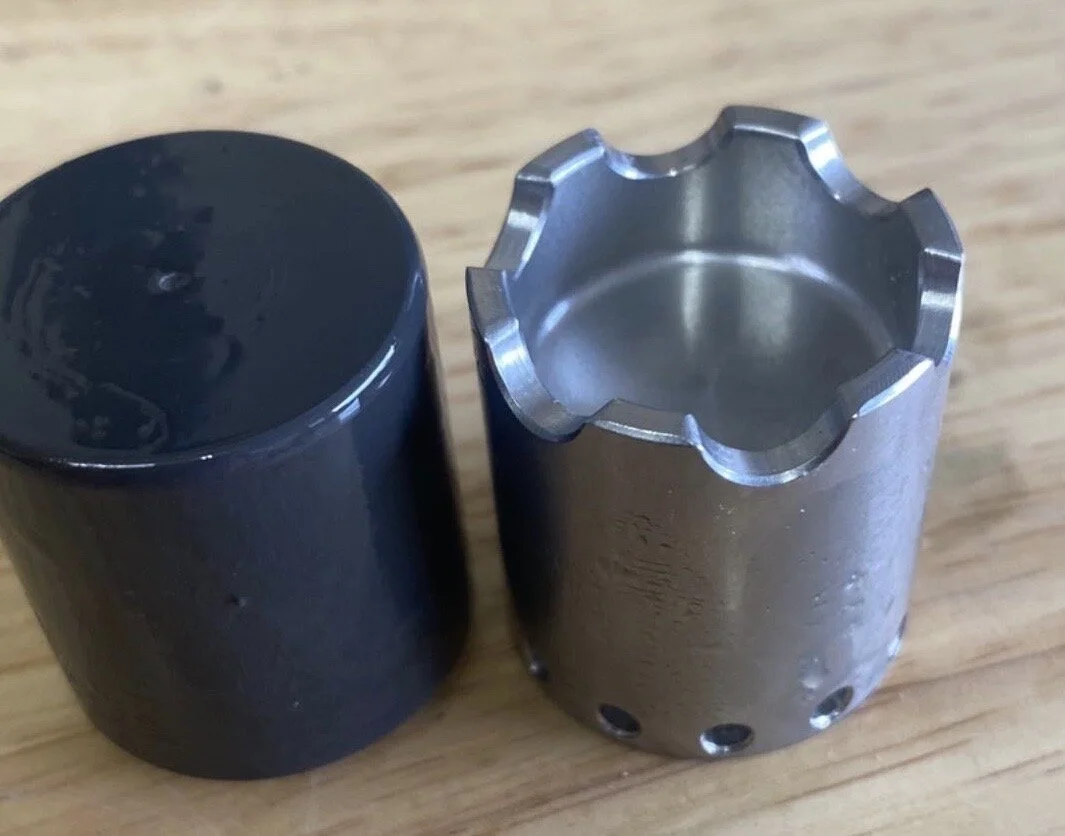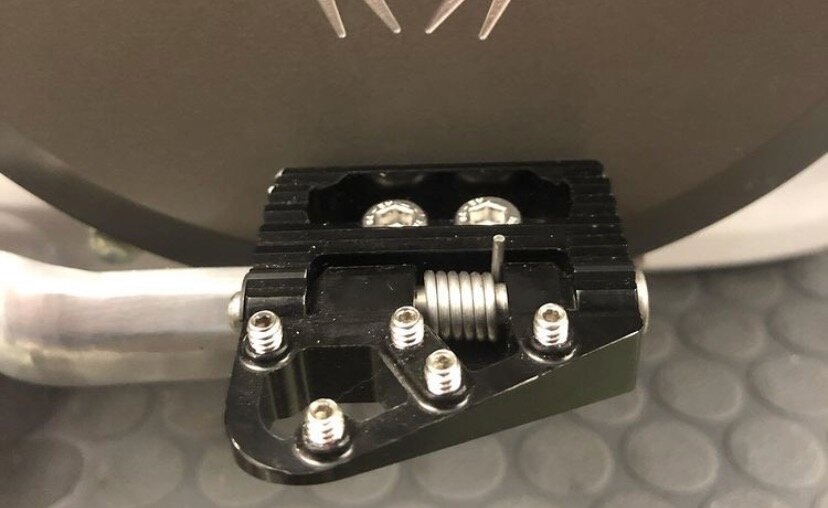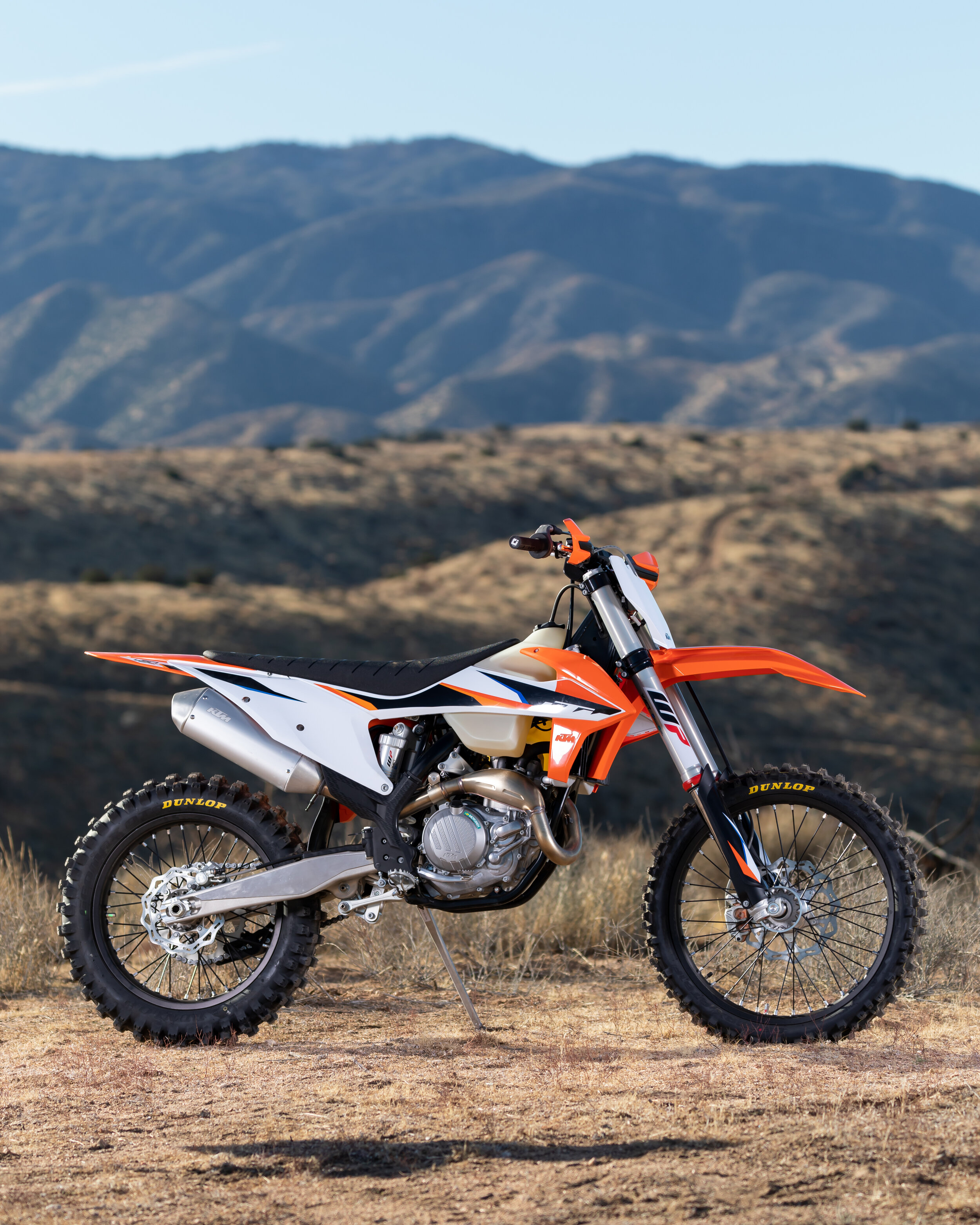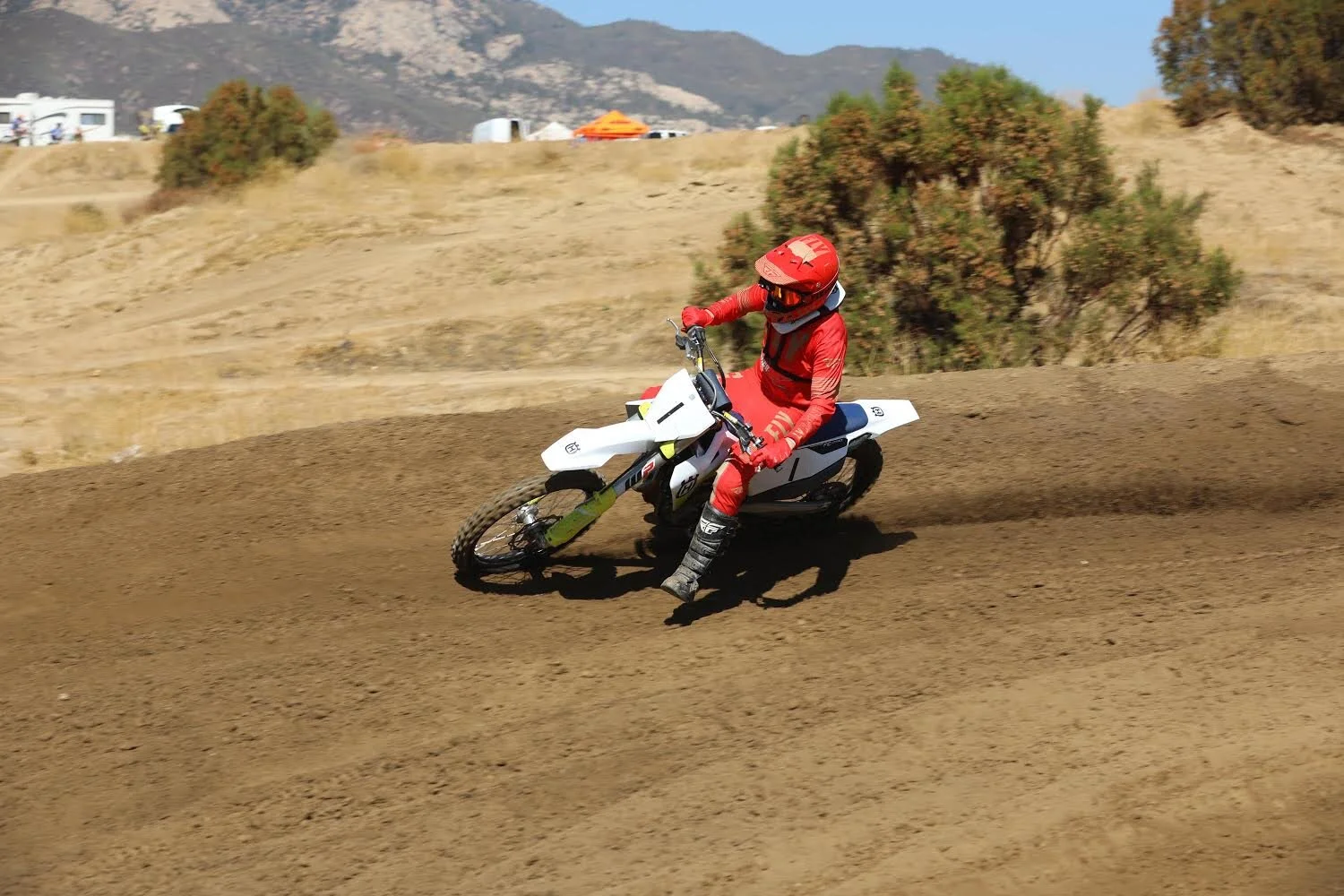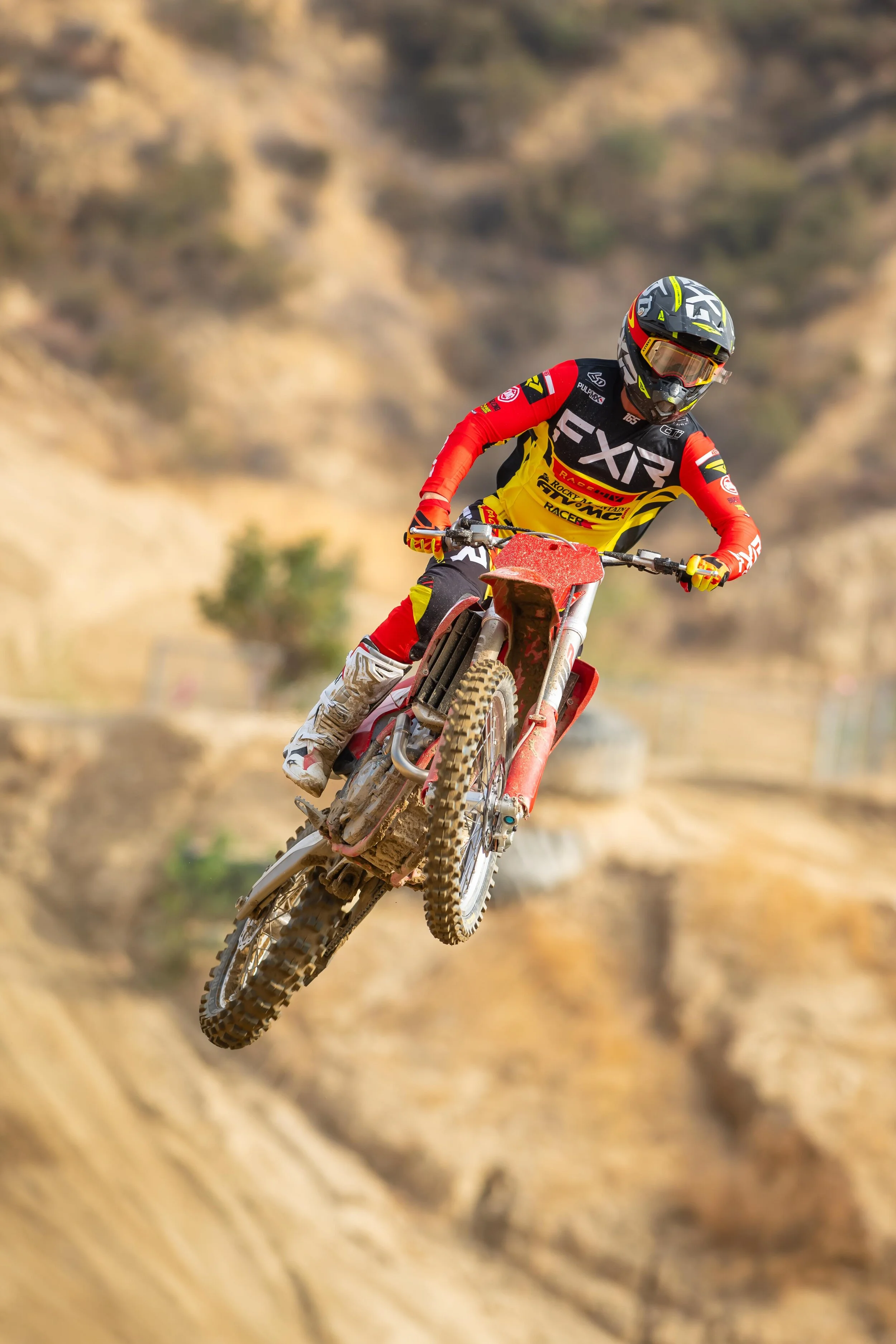2021 Yamaha YZ450F:
Engine Hours 50.2
Tires: Dunlop MX3S/MX12 13.5/12.5 PSI
Bars: Pro Taper SX Race Evo
Grips: Renthal Half Waffle Medium
Levers: ARC RC-8 Perch/Lever
Throttle: ZRT
Rider Triangle: -5mm down and back peg position/stock bar height/rear hole
Gearing: 13/49 Renthal Sprockets/DID ERT3 Chain
Engine Mods: Vortex ECU Mapped By XPR/Akrapovic Evolution System
Engine Oil: Blud Racing 10/40 Pro Series
Fuel: Renegade SX4
Holeshot Device: WC
Graphics/Seat: Throttle Syndicate
Suspension: Enzo Racing Test Fork/Shock Spec #KK145
Air Filter: Twin Air Power Flow Kit
Plastic: Cycra Power Flow Kit
Results: 1st 450 Pro (1-1-1), 2nd 30 Pro (2-2)
Notes:
• GH World Vet Vortex ECU setting as well as Akrapovic muffler allowed the most rear wheel connection I have felt yet from any muffler I have tested to date. Power was controlled and easy to manage late in motos.
• YZ450F feels slightly heavy on entry of shallow ruts.
• PSF1 Fork was stiffened up to 38.5 PSI to help with hold up coming down hills. PSF1 had more comfort on heavy landings or when pushing hard into corners. lean angle is not as good as spring fork, but PSF1 setting allowed me to push harder later in the day. Surprising!
• Shock sag at 105mm made for acceptable balance, but left rebound setting from 4/10/21 race to compensate for choppy conditions so rear can follow ground more.
• WC start device was better off the gate when set at 120mm for dirt start.
• Updated rider triangle (-5mm/-10 back pegs) allows for less leg fatigue. Legs were fresher at end of motos.
• GUTS standard seat foam is firmer than stock OEM foam and last longer. (12.1 hours on foam and density still holding up).
Suspension Setting:
Fork: (Spec #KK28PSF1)
Air Pressure: 38.5
C: 15
R: 11
Height: 2mm
Shock: (Spec #KK144S)
LSC: 10
HSC: 1.25
R: 9
Sag: 105mm
Track: Glen Helen Raceway
Aden Keefer
Terrain: Sandy top soil AM with hard pack in PM
Start: Dirt
Avg Lap Time: 2:02
Total Number Of Motos: 4 motos (Four 7 lap motos)
Weight At Time Of Race: 130 pounds w/o gear


